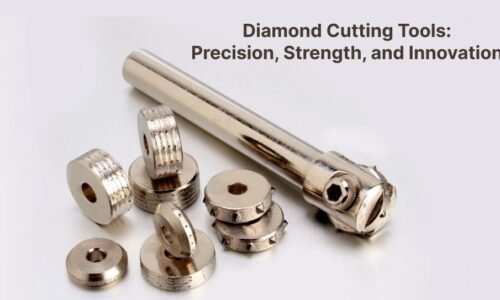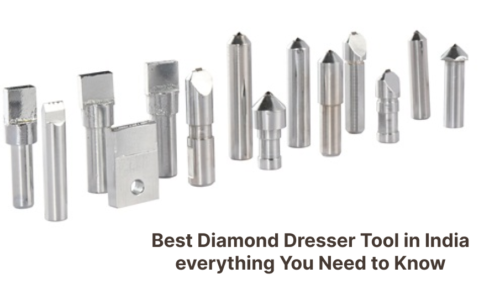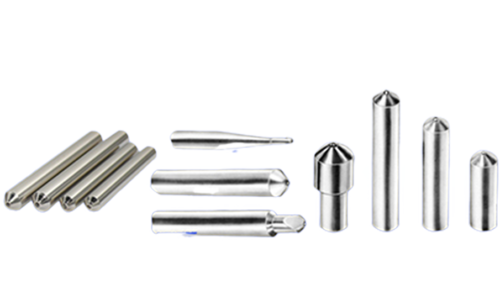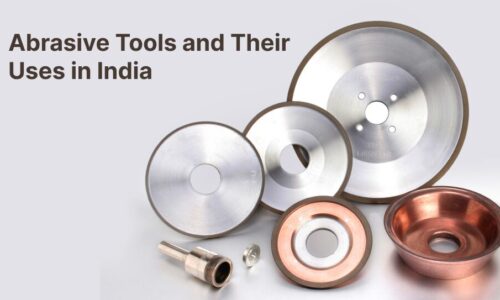
A Comprehensive Guide to Abrasive Tools: Types, Uses, and Benefits
- By DDoctor
- Posted on
Introduction
Different sectors, such as metal, construction, automotive and wood industries, cannot operate efficiently without abrasive products. These are basic hand tools use in grinding, polishing or removing material from a stock with the aim of having a desired size or shape. Because they can accommodate any task that a human operator is capable of doing in a much shorter time, abrasive tools have been consider as tools that cannot be easily dispense in today’s manufacturing and other related industries.
In this technical encyclopedia, the reader will get to know the types of abrasive tools depending on the application, their capabilities, and advantages. Starting from an experienced construction worker to a simple ‘handyman’ keen on finishing up his home improvement project, it is pertinent to learn about the benefits and functionality of abrasive tools to enable one to make an adequate selection.
What Are Abrasive Tools?
Definition:
Abrasive tools are devices or implements encased with abrasive materials and which are use in operations like cutting, grinding, polishing, and finishing. These tools are construct of metallic oxides such as alumina, silicon carbide, diamond, boron nitride and other carbon-based ceramics.
Function:
Their primary application can be describe as to abrade or wear away a material from a worked piece through friction. These may be use to refine an edge, make calibration-like cuts or prepare a surface for receiving further treatments. Abrasive tools are utilize in different industries such as manufacturing, construction, automobile and the jewelry industry, among others.
Types of Abrasive Tools
There are many forms of abrasive tools, which include the following that are specialized for different usages. Knowledge of these types will enable you to choose the right tool for a specific application.
a) Grinding Wheels
Abrasive wheels are among the most common types of abrasives that are widely use in different industries. They include a composite material that is key to a wheel that has the capability to rotate at very high speed in order to grind or cut materials.
- Uses: These are widely use in operations such as metal cutting and shaping, tool cutting and sharpening, and polishing, among others.
- Benefits: It provides high precision, durability and efficiency, The tools are use in rough grinding applications as well as fine finishing applications.
b) Sandpaper
Attach to a flexible sheeting material—paper or cloth—it is a flexible abrasive particle glued to it. It ranges from coarse to fine grit, while it is available in four groups.
- Uses: Sandpaper is basically use on wooden surfaces, in surfaces that require sand, or on surfaces to be directly subjected to paint or rust.
- Benefits: It gives good control and depths and allows one to cover a large area with a smooth surface with more reasons on different kinds of surfaces.
c) Abrasive Belts
Resin bonded belts are flat strips of abrasive material, coated with resin, and used with machines that have a flat contact face, such as belt sanders or grinders. They are available in a range of widths and different grain densities to provide an ideal solution for several uses.
- Uses: As the name implies, abrasive belts are best suit for simple outlining, grinding, and polishing of large working surfaces of wood, metals, and plastic materials.
- Benefits: Some of the advantages that can be attribute to the use of finishing by grinding are high rates of metal removal, uniform surface finish and suitability for large work pieces.
d) Abrasive Discs
Abrasive discs can be define as circular-shaped accessories that can be use with grinder or polisher machines. There are various kinds of discs which include cutting discs, grinding discs and flap discs among others and all these are intend to perform specific functions.
- Uses: Abrasive discs, which can also be attache to a disc sander sandpaper, are use for cutting, grinding and polishing metals, concrete, ceramics, and other hard surfaces.
- Benefits: They cut at high speeds, are very versatile, and have a long life span that will enable them to be use in numerous operations.
e) Abrasive brushes
Abrasive brushes are equipment whereby the bristles are provided with abrasive related materials. This type of sand is applied in applications such as surface treatment, de-scaling, desmutting, and in removal of coatings.
- Uses: Coarse brushes are use in metal surfaces, wood working and in preparing the surface of any material.
- Benefits: They afford maneuverability, accuracy and the prospect of accessing such areas as complex patterns and other awkward points.
f) Abrasive Files
Sanding files are file tools that are hand-hold and composed of abrasive surface for detailed finishing of surfaces, freeing from burrs or smoothing of small or detailed parts.
- Uses: Coarse files, on the other hand, are recommend for general work and fine files are recommend for delicate work such as metalwork, jewellery and modeling.
- Benefits: Pulse control and speed regulation and the ability to operate in confine areas or at close distances are some of the advantages offered by these types of hoists.
Uses of Abrasive Tools
There are so many applications of abrasive tools in many industries, depending on the need of the user. Here are some of the most common uses:Here are some of the most common uses:
a) Metalworking
Abrasives have applications in metalworking that include grinding, polishing, deburring, and surface finishing. They are crucial in generating accurate patterns, cutting contaminants and offering a polished look on the metal parts.
b) Woodworking
In woodworking, there are particular types of tools as sandpapers, abrasive belts, etc., created to shave material away, make a smooth surface, and remove the burrs on wooden materials that are to be painted or stained. They are also useful in carving and putting into the desired form furniture and cabinetry woods.
c) Automotive Industry
In the automobile industry, these abrasives are used for cutting, grinding and polishing like body panels, engine and wheels. These are important in automobile maintenance and reconditioning, as well as in the production of automobiles.
d) Construction
The common application of abrasive tools is during construction, where one uses concrete, stones or tiles for cutting or grinding. They also serve the purpose of stripping paint, rust, and other coatings from surfaces and other jobs of surface preparation type.
e) Jewelry Making
In jewelry making, there are abrasives such as abrasive files or sandpaper, which are use for cutting, shaping, and finishing the metal or the stones. They assist in meeting the fineness of work that is expect in establishing fancy ornaments.
Benefits of Using Abrasive Tools
Using abrasive tools offers numerous benefits, including:
a) High Efficiency
Cutting tools are use with the intention of generating higher work rates and hence minimizing the cost of a man-hour. This is especially the case in the industrial practices where time equals money, hence the question of why and when.
b) Precision
The materials from which the above mention tools are made are hard-wearing and thus can cut, grind and polish with much accuracy. Such accuracy helps produce better finishes as well as deal with minimum variations in the overall manufacturing processes.
c) Versatility
Abrasives come in several categories, including wheel grinding, sanding belts, and discs, hence making them versatile for several uses. This means that you can always be able to find an abrasive tool that is suitable for use on metals, wood, concrete and even glass.
d) Durability
The importance of abrasives lies in the fact that high-quality abrasives and tools, crafted from sturdy materials, resist wear and tear. This durability reduces the frequency of tool replacement, lowers overall costs, and minimizes downtime.
e) Improved Safety
Some of the safety measures incorporated in most abrasive tools are backed body, limited material removal and low dust emissions, resulting in minimized cases of accidents and diseases.
How to Choose the Right Abrasive Tool
When choosing an abrasive tool, the following are factors that one should consider: the type of material that is being work on, the surface finish you wish to achieve and the jobs that you have at hand. Here are some tips to help you choose the right tool:
- Material Compatibility: It is always important to make sure that the abrasive tool you have selecte is right for the material that is to be work on. For instance, diamond abrasives should be use for cutting hard materials such as concrete and metal, while aluminum oxide is suitable for use on commodities such as wood.
- Grit Size: There are Use coarser grits for coarse and rough applications, such as grinding away large amounts of material, and fine grits for finishing and polishing.
- Tool Type: Choosing a type of tool depends on the purpose that you want it to serve in your project. For instance, a grinding wheel is more appropriate for an abrasive cutting application than a sanding belt appropriate for flat surface figuring.
- Quality and Brand: Choose the proper type of abrasive tool and select products of the well-known manufacturers; it will be more durable and safe.
Maintenance and Care for Abrasive Tools
Cleaning and preservation of abrasive tools must be carried out in the right manner since they determine the life span of the tools and their performance. Here are some maintenance tips:
- Clean Regularly: After every use, ensure the surface of the abrasive tool is clean of particles, dirt or accumulation of any sort. Such helps in avoiding a blocking course and maintains the best performance at the time needed.
- Inspect for Wear: Check abrasive tools periodically for wear or cracks and other signs that may necessitate replacement. As with any other tool, damage or worn-out tools need to be replace to avoid any accidents as well as producing quality work.
- Store Properly: It is recommended to dry store all the abrasive tools because moisture can cause their corrosion. Do not expose them to direct sunlight and avoid using chemicals on them.
Conclusion
Abrasive tools are widely use in various industries because they are effective and versatile complementary for many applications. These tools include grinding and polishing, cutting and finishing tools that are crucial whether to an expert or a do-it-yourself project. If one is to fully comprehend the various categories, applications, and advantages of abrasive tools, he or she will be able to arrive at the most appropriate decision in order to improve the quality of work as well as efficiency.
To sum up, one should note that purchasing only quality material of abrasives along with calling for reputable manufacturers would give the best results regarding the performance and durability of the tools. As this video shows and as I mentioned, maintenance tools can indeed give you excellent results for all of your projects, even if it is metal, wood or concrete.
FAQs
Q1: What are the different types of abrasive tools?
A1: The various forms of abrasives are a grinding wheel, sandpaper, abrasive belt, abrasive disc, abrasive brush and an abrasive file. Each type is meant for specific uses, which include grinding, polishing, and cutting, among others
Q2: How do I choose the right abrasive tool for my project?
A2: In selecting an appropriate abrasive tool, the following aspects have to be consider; the type of material to work on, the level of finish desired, the grit size, type of tool and quality. Make sure this tool is suitable for use in the particular application into which it is to be use and offers the right degree of accuracy and sturdiness.
Q3: What are the benefits of using abrasive tools in manufacturing?
A3: There are advantages to applying abrasives in production operations, which are efficiency, accuracy, flexibility, wear and tear, and safety. It is done using the above-mention tool to get a a good surface finish, which in turn reduces the manpower and the costs.
Q4: Can abrasive tools be use on multiple materials?
Yes, abrasive tools are use with different materials, such as metal, wood, concrete and glass, among others. But of course, the choice of material that you use and the grit size of the tool need to be selecte for each material so that the result is the best.
Q5: How can I extend the lifespan of my abrasive tools?
A5: By proper care, you could ensure that you increase the working period of your abrasive tools by ensuring you clean them often, check on them for any signs of wear and tear, ensure you store them in the right manner and use the right products in the right manner as recommended by the manufacturers. To do this, you need to take proper care that will ensure that your tools are not only long lasting but are also reliable. Most often, this is something that people have no idea how to do. Because they do not have a clue about this, their tools will end up being extremely expensive to maintain.





